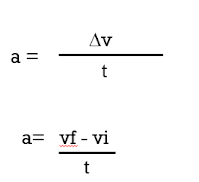HOOKE'S LAW Introduction In physics, Hooke's Law is one of the fundamental principles governing how objects deform under external forces . Named after the 17th-century British physicist Robert Hooke, this law provides a crucial understanding of the behavior of elastic materials, such as springs and rubber bands. Whether stretching a rubber band or compressing a spring, Hooke's Law helps explain what happens when forces act on these materials. What is Hooke's Law: Hooke's Law states that the force F needed to extend or compress a spring by some distance x is proportional to that distance. Mathematically, it is expressed as: F= -kx Here k represents the spring constant, which is the measure of the stiffness of the spring, and x is the displacement from the displacement position. The negative sign indicates that the force exerted by the spring is in the opposite direction of the displacement. Understanding the Spring Constant: The spring constant k is a critical co...
Difference between Translatory, Rotatory and Vibratory Motion And Some basic Concept that define Motion
Difference Between Translatory, Rotatory and Vibratory Motion
Distance:
- The total length covered by a body without mentioning the direction, is called Distance.
- Its unit is Meter.
- It is Scalar Quantity.
Displacement:
- The distance measured in a particular direction is said to be Displacement.
- Its Unit is Meter.
- It is a vector quantity.
Speed:
- Speed of an object determines how fast the object is moving.
- The rate of change of the position of an object is called Speed.
- It is a Scalar quantity.
- Its Unit is meters/seconds.
- It can be calculated as:
- If the body covers equal distance in equal interval of time its speed is said to be Uniform Speed.
- If a body doesn't cover equal distance in equal interval of time, then its speed is said to be Variable Speed.
Velocity:
- Velocity means the speed of an object in an specified direction.
- It is the rate of change of displacement with respect to time.
- It is a vector quantity.
- Its unit is meters/seconds.
- It can be calculated as;
- If the body covers equal distance in a particular direction in equal interval of time, it is said to be Uniform Velocity.
- If the body doesn't covers equal distance in a particular direction in equal interval of time, it is said to be Variable Velocity.
Acceleration:
- An object acquires acceleration when its velocity gets change.
- The rate of change of velocity with respect to time is termed as Acceleration.
- It is a Vector quantity.
- Its unit is meters/second^2.
- It can be calculated as;
- When velocity of an object increases or decreases with passage of time, it causes acceleration.
- The increase in velocity gives rise to positive acceleration.
- It means the acceleration is in the direction of velocity.
- Whereas acceleration due to decrease in velocity is negative and is called deceleration or retardation
- The direction of deceleration is opposite to that of change velocity.
- A body has uniform acceleration, if the velocity of body changes by an equal amount in every equal time period.
- A constant rate of change of velocity with respect to time is called Uniform Acceleration.
- Uniform acceleration calculation;






Comments
Post a Comment